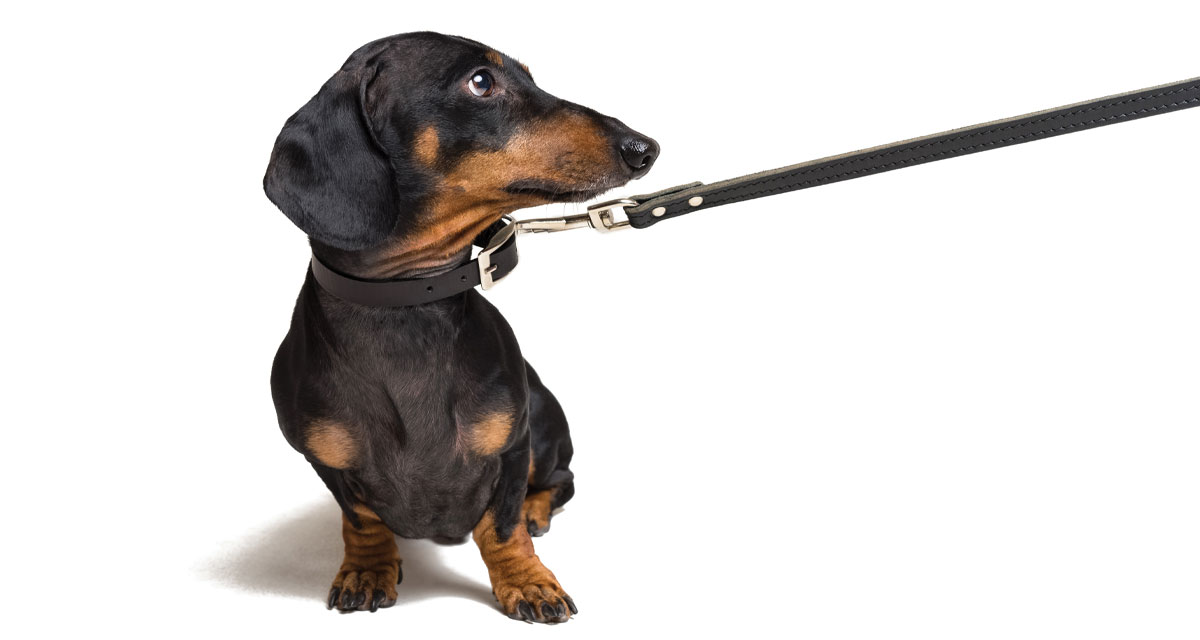The soft sounds of snoring coming from the dog bed only require one shake from the lead to cease. In seconds, the relaxed four-legged friend is alert and bounding excitedly to the front door. Of course, she knows the routine. A good “Sit” results in the clip of the carabiner to the collar, preceding the words, “Good girl!” Dogs with owners unprepared for animal instinct lunge forward and sometimes force the owner to match their same speed as in pursuit of a squirrel. Another gut reaction occurs as the Alpha pulls back on the lead while disobeying the command, “Sit!” Unbeknownst to the owner, repeated jerking on the collar can result in a long-term medical injury to the thyroid glands and tissues surrounding the neck.
Inflamed Hormone Gland
Knowing the anatomy of a canine’s neck will aid dog owners to understand the repercussions of each tug. Behind the collar is the thyroid, which encompasses large regions of the left and right side of the trachea. Why is this gland important? In regulating metabolic rate, it also produces hormones to control the heart, muscles, digestive functions, brain development, tissues, and bones.
As pressure is exerted upon the neck, the result impacts:
- the thyroid. After repeated incidents, white blood cells can no longer heal inflammation and bruising, which leads to a term called “low thyroid.” The body will no longer secrete the hormone, thyroxine, leading to the inability to control the metabolism. Excessive weight gain then links to hypothyroidism.
- blood flow to the eyes and ears. If restrictions occur regularly, such as with every walk, they can cause swelling, and eventually, irreparable damage to the organs and appendages.
- the trachea. Injury leads to a honking cough and sounds or snores when sleeping.
- The nerves of the forelegs. In an attempt to make the ache feel better, dogs will start licking their paws.
Investing in Safe Collars and Leads
The options for buckle-type dog collars include every possibility, from thickness to color, and from soft to more abrasive styles, such as the choke and prong. Comparison shopping helps dog lovers understand the variety of materials and choose the best option for the “fur kid” and walker.
One popular option to gain control, while eliminating the action of pulling and jumping, is a vest or strap harness. Easy to click on and take off, the padded straps extend over the breast and underneath the front legs. Rather than the attaching at the neck, the harness controls movement from the body—an ideal option for training puppies or walking multiple dogs.
Tip: Indoor dogs can take a break from wearing collars and harnesses. Hang them up near the lead to ensure accessibility as needed.
Tip: Check the tightness of the collars. You should be able to put two fingers underneath the band.
Dog Training
The goal of training is to ensure your dog understands the rules and stays in step with you. The following suggestions should aid owners in gaining more control, while ensuring the safety of non-dog-friendly strangers.
- Allowing a dog to walk several feet ahead leads to pulling; instead, he or she should stay on your right side. Try increasing speed and then slowing down; you’ll notice whether your dog will remain in sync.
- At every stop sign, make your dog sit. Choose a hand signal that suits your comfort level. As you meet people who are not comfortable with dogs, the intimidation factor drops when dogs immediately sit at a stop.
- Long walks are great for dogs and owners, but also allow her to run and socialize with other animals. Dogs that pull need to release pent-up energy.
Exploring the Outside World
A canine has roughly 300 million olfactory receptors, compared to humans with a mere six million. The nose of a dog can analyze smells at approximately 40 times greater sensitivity. As your four-legged friend and you stroll through neighborhoods, parks, and fields, keep in mind the need to offer “sniff breaks.” If your dog remains mostly in the house and back yard, the world outside those perimeters offers new tantalizing experiences. Every day provides an opportunity to practice the bond between canine and Alpha, and reduce tugs and pulls!



















